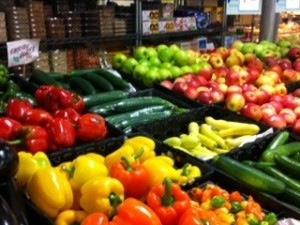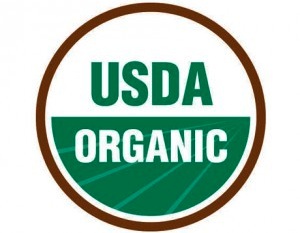 Do you remember being told, “Eat your fruit and vegetables?” I certainly was told that – and I said the same thing to my kids.
Do you remember being told, “Eat your fruit and vegetables?” I certainly was told that – and I said the same thing to my kids.
I’ve been watching members of my own family – who cover almost a century in age range – happily eat their fruit and vegetables. Over the past few days I’ve watched a 16 month old gobble up his banana and eat half an avocado giving greater preference to them rather than to his French toast or chicken and pasta. A three year old went for the blueberries and strawberries decorating her “happy face pancakes” before touching anything else and loves to put blackberries on the tips of her fingers and eat them one by one.
At the other end of the age spectrum, my 95 year old Aunt and 92 year old Mother, raised on a farm, rely on their fruit and vegetables as the mainstays of their diets. My Aunt wanted me to take a banana home to the 16 month old and my Mom routinely brings fruit when she visits her sister.
No one is vegetarian – everyone just naturally prefers a plant-based diet. They do couple their fruit and veggies with meat, fish, dairy, grains, and a whole lot of nuts — and they do have occasional desserts. What they eat is a Mediterranean style diet – but they wouldn’t describe it as such. It’s just what goes on the table and what they eat and enjoy. For my Mom and her sister, two out of 13 children, that’s a lot of fruit and veggie nutrients over close to a century’s worth of time.
Why Eating Fruit And Veggies Is A Good Idea
- They may reduce the risk of cancer and other chronic diseases; help control blood pressure and prevent heart disease and stroke; help to avoid diverticulitis; and guard against two common causes of vision loss, cataracts and macular degeneration.
- They have a mellowing effect on blood sugar levels that can help keep your appetite in check.
- They provide essential vitamins and minerals, fiber, and other substances that are important for good health.
- Most of them are filling and are naturally low in fat and calories.
- They taste good and look great on your plate.
How Much Produce Should You Eat?
Not counting potatoes—which should be considered more of a starch than a vegetable—the average American eats just three servings of fruit and vegetables a day. Dietary guidelines call for 5 to 13 servings of fruit and vegetables a day (2½ to 6½ cups), depending on your caloric intake. A person who needs 2,000 calories a day would need 9 servings, or 4½ cups a day (remember, potatoes don’t count). Aim for a variety of types and colors to give your body the mix of nutrients it needs. The more colorful, the greater the rainbow, the better the nutrition for your body.
Love The Rainbow
Red fruit and vegetables get their color from the pigments lycopene and anthocyanin. Lycopene, found in produce like tomatoes, watermelon, and pink grapefruit, may help reduce the risk of certain cancers, especially prostate cancer.
Anthocyanins, found in strawberries, raspberries, red grapes, and other fruits and vegetables, are powerful antioxidants that protect cells from damage and help with heart health.
Orange and yellow fruit and vegetables get their color from natural plant pigments called carotenoids. Beta-carotene, found in sweet potatoes, pumpkins and carrots, is converted to vitamin A which helps maintain healthy eyes and mucous membranes. Carotenoid-rich foods can also help reduce the risk of heart disease and cancer and can improve immune system function.
Chlorophyll, a natural plant pigment, gives green fruit and vegetables their color. Some greens — like spinach, dark leafy greens, green peppers, peas, cucumbers, and celery — contain lutein which works with zeaxanthin– found in corn, red peppers, oranges, grapes and egg yolks — to help keep your eyes healthy and reduce the risk of cataracts and age-related macular degeneration.
Indoles in broccoli, cauliflower, cabbage, and other cruciferous veggies help protect against some types of cancer. Leafy greens, spinach, and broccoli are great sources of folate, a B vitamin that helps reduce risk of birth defects.
Blue and purple fruit and vegetables get their color from natural plant pigments called anthocyanins, like those found in blueberries and grapes. They are powerful antioxidants that protect cells from damage and may help reduce risk of cancer, stroke, and heart disease. Blueberry consumption has also been linked with improved memory function and healthy aging.
White fruit and vegetables, colored by pigments called anthoxanthins, contain allicin — which might help lower cholesterol and blood pressure and possibly help reduce the risk of stomach cancer and heart disease.
A Cup Is A Cup Except . . .
A cup is a household measuring cup for most fresh or cooked vegetables and fruits. Two exceptions to that rule: for lettuce and other raw leafy greens, you need to eat 2 cups to get the equivalent of 1 cup of vegetables and for dried fruit, you only need to eat ½ cup to get the equivalent of 1 cup of fruit.

